Ever wonder why some dogs seem to be constantly on edge or shy away from new experiences? It’s not because they don’t like people—it’s just in their nature. Some dogs are naturally more nervous and timid, which can make them extra cautious or even skittish in new situations. But don’t let that fool you; these pups are often sweet, loyal companions once they feel comfortable with their surroundings.
These dogs are like little introverts of the canine world. They’re not always the first to jump into the spotlight, but they can form deep, meaningful bonds with their owners. Patience, understanding, and a calm environment are key to helping them come out of their shell.
If you’ve got a timid dog, you know that sometimes it takes a little extra time to earn their trust. But once you do, they’ll stick by your side through thick and thin!
Nervous and Timid Dog Breeds
1. Akita Inu
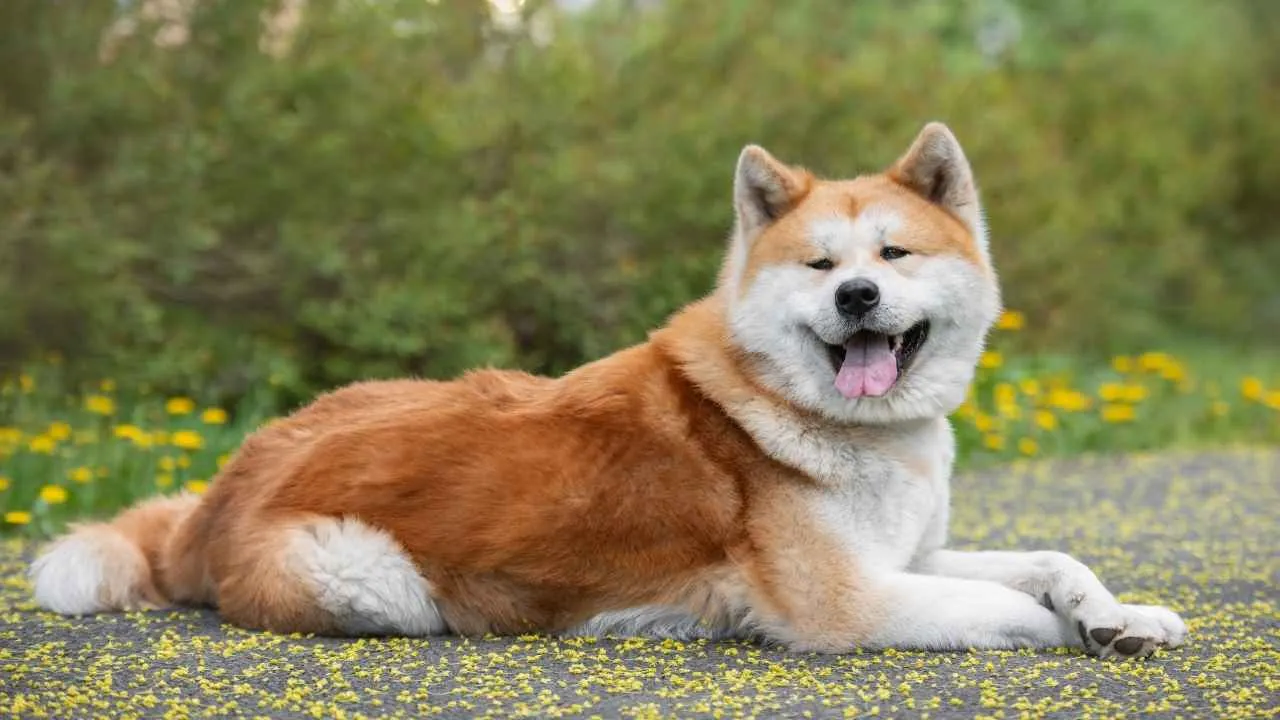
The Akita Inu is a breed that combines strength and shyness in a truly unique way. While these majestic dogs are known for their loyalty and protective instincts, they can also be quite nervous, especially in unfamiliar situations. Akita tend to be reserved and can be very timid around new people or environments.
Their nervous nature can often make them seem aloof, but it’s not because they don’t like people. Rather, they’re slow to warm up to strangers, needing time to adjust to new faces. An Akita’s bond with its family is deeply rooted in trust, and once that trust is built, they’re very affectionate and protective.
Akita is not your typical “outgoing” dog. They may not love large crowds or loud noises, making them more suited for quieter homes. For instance, if you live in a busy neighborhood or a bustling apartment complex, your Akita might not be as relaxed as in a peaceful, low-traffic environment.
Despite their timidity, Akita are incredibly brave. Historically, they were used to guard Japanese royalty, and their protective instincts are still strong today. This breed is known to be very loyal and devoted to its family, but their protective nature means they may be wary of strangers, which can make socialization more difficult. Akita is known for being an incredibly loyal family pet, says PDSA.
While Akita may struggle with anxiety in certain situations, they are incredibly rewarding companions once you’ve established trust. Their loyalty and affection are unmatched, but it’s crucial to give them the space they need. Have you ever experienced a timid dog warming up to you over time?
2. Great Dane

Great Danes are often considered the “Apollo of dogs,” not just for their striking size but also for their surprisingly timid and nervous temperament in certain situations. Despite being one of the tallest dog breeds in the world, they are known for their sweet, shy, and gentle nature. This awe-inspiring in stature dog breed can be surprisingly cautious and a bit skittish.
Great Danes are generally not the type to charge into a room with full energy. In fact, many of them would rather hide behind their owners or retreat to a safe, quiet corner when faced with new people or loud noises. It’s as though they’re trying to be as unobtrusive as possible, despite their sheer size.
For Great Danes, building confidence is key. AKC says that they can be incredibly affectionate and loving with their family, but they’re not the type to seek out attention from strangers. Socialization is essential for this breed, but it’s best done slowly and with plenty of positive reinforcement.
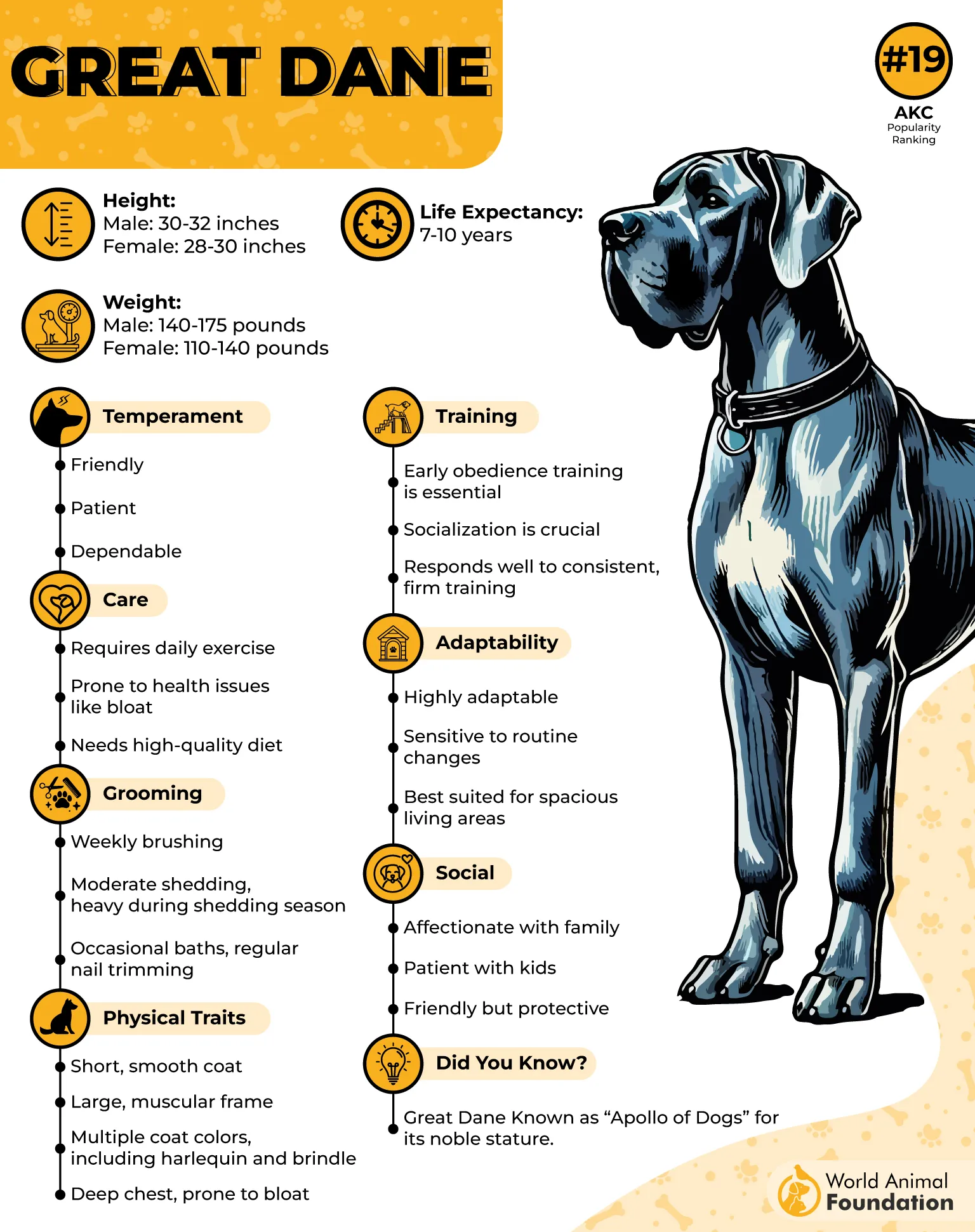
Due to their size and timidity, Great Danes are also known to have a unique way of showing affection. They might not jump up and wag their tails like other dogs, but they’ll lean gently into you or rest their giant head on your lap, quietly seeking comfort and reassurance. They’re the epitome of the phrase “big heart.”

Another fascinating aspect of Great Danes is their sensitivity to their environment. While many dogs thrive in a busy, energetic atmosphere, Great Danes tend to become anxious in high-stress settings. They prefer calm surroundings where they can feel safe and in control. This makes them ideal pets for families who enjoy a peaceful home environment.
3. Whippet

Whippets are often mistaken for being all about speed, and while they are indeed one of the fastest dog breeds around, their personality is often anything but fast-paced. These elegant, sleek dogs are surprisingly timid, especially in new or unfamiliar environments. Whippets tend to be more reserved and shy, often showing their nervous side when faced with loud noises or unfamiliar faces.
Their nervousness is not an uncommon trait for a breed that was initially bred for hunting and coursing small game. Whippets are sensitive souls, and their cautious nature comes from a deep need for security and comfort. They are not known for being overly social with strangers, and they take time to warm up to new people or situations.
Instead of being reactive or anxious in the traditional sense, many Whippets have a tendency to “freeze” in place when something feels overwhelming. It’s like their way of pausing to assess the situation. This behavior can be endearing, especially when you’re trying to figure out what has caught their attention.
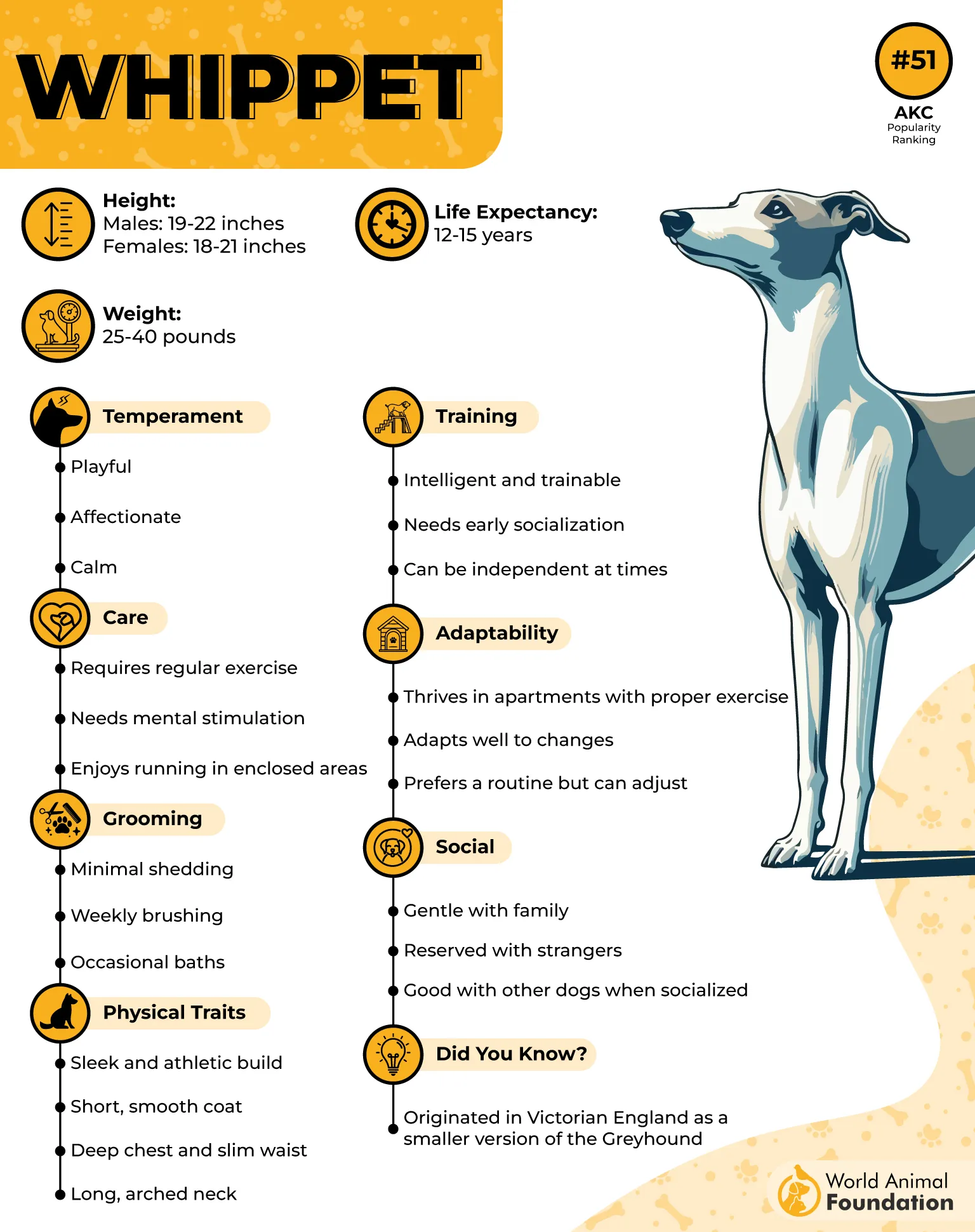
Whippets are often described as “couch potatoes” when they’re not running, and this perfectly sums up their need for downtime. They enjoy lounging around and snuggling up with their favorite people. They are the type of dog that craves affection and comfort once they feel safe in their home environment.
These dogs also tend to be surprisingly quiet, which adds to their shy demeanor. Unlike some breeds that are vocal when nervous, Whippets rarely bark, and they often choose to communicate through body language rather than loud noises. This can make them an excellent choice for apartment living or homes where you don’t want a lot of noise.
4. Greyhound
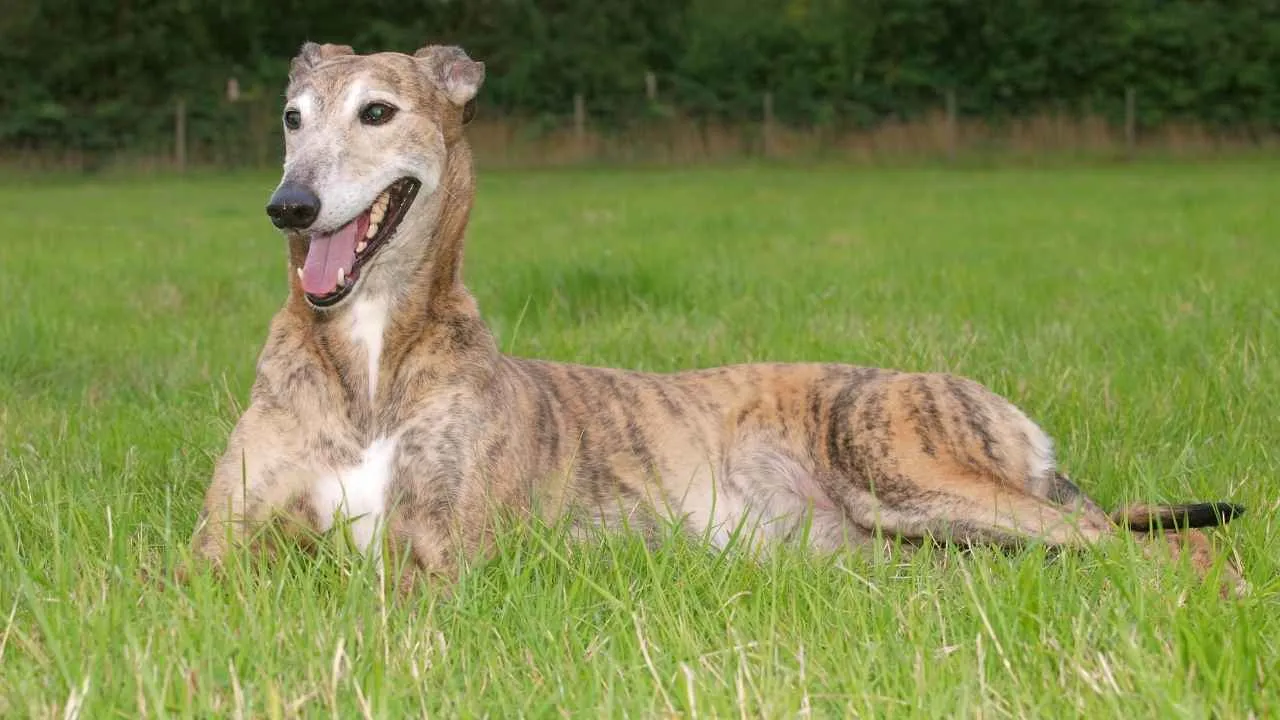
Greyhounds are often seen as sleek, fast athletes, renowned for their ability to reach incredible speeds on the racetrack. But behind that lightning-fast exterior lies a surprisingly timid and gentle dog. While their speed and athleticism are undeniable, many people are surprised to learn that Greyhounds are actually one of the most laid-back and shy breeds when it comes to their personality.
Unlike what you might expect from a racing dog, they tend to be quiet and a little nervous in unfamiliar environments. Their racing days have taught them to be hyper-focused, but they’re not the type of dog to be outgoing or overly energetic.
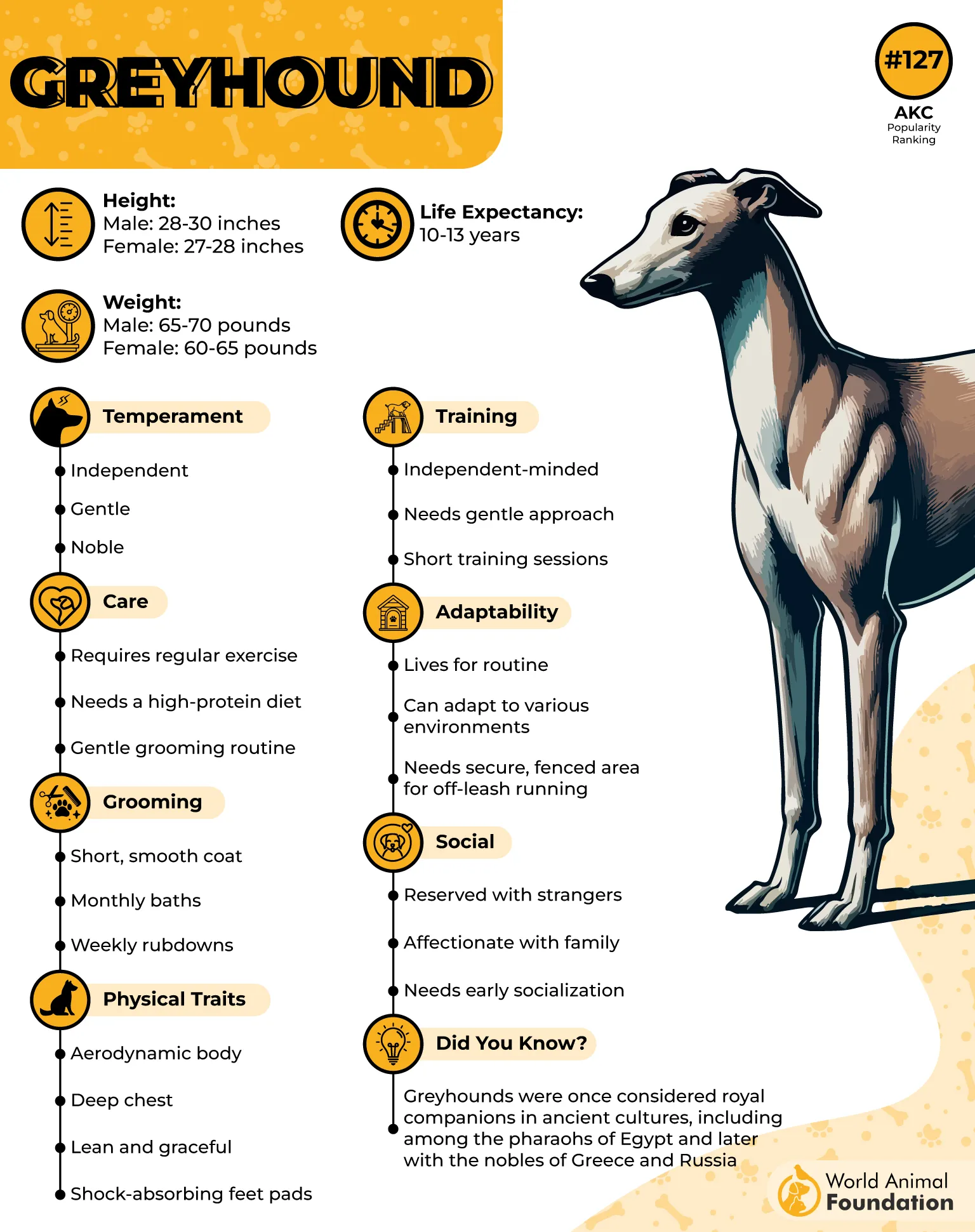
What makes Greyhounds particularly unique is their ability to quickly switch from full-speed runners to relaxed couch potatoes. Despite being one of the fastest dogs in the world, they are laid-back and lazy at home. Many Greyhounds enjoy lounging around and curling up in a comfy spot.
One important thing to note about Greyhounds is their sensitivity to loud noises. They can easily become anxious if exposed to sudden, harsh sounds, like thunderstorms or fireworks. This trait can make them seem more nervous than other dogs, but with proper care and training, you can help them feel safe and secure during those stressful times.
According to Petplan, these dogs are intelligent but often more reserved than other breeds, meaning they don’t always respond to training in the same way. Positive reinforcement is the best approach, and they thrive when training is done gently and calmly.
5. English Bulldog

When you think of an English Bulldog, you might picture a strong, tough, stocky dog with a gruff exterior. However, beneath their tough-guy looks lies a surprisingly shy and timid nature. While they might seem confident when standing their ground, English Bulldogs are often more reserved and nervous in new situations.
VCA states that Bulldogs are incredibly loyal once they feel comfortable with their family. They have a strong bond with their owners and are known for being affectionate in their own, unique way. You won’t catch them jumping around with excitement, but they’ll happily lean against you or snuggle up on the couch when they want affection.
English Bulldogs are quite sensitive to their environment. They can feel overwhelmed by loud noises, changes in routine, or the presence of strangers. It’s not that they don’t want to socialize—they just need some time to adjust before they feel secure enough to interact.
Their sensitive nature also means that they thrive in quieter homes. While they can handle a busy family life, they tend to prefer a more peaceful environment where they can relax without the constant hustle and bustle. A Bulldog may not be thrilled about large crowds or loud parties, but they’ll be right at home with a quiet evening on the couch, watching Netflix with you.
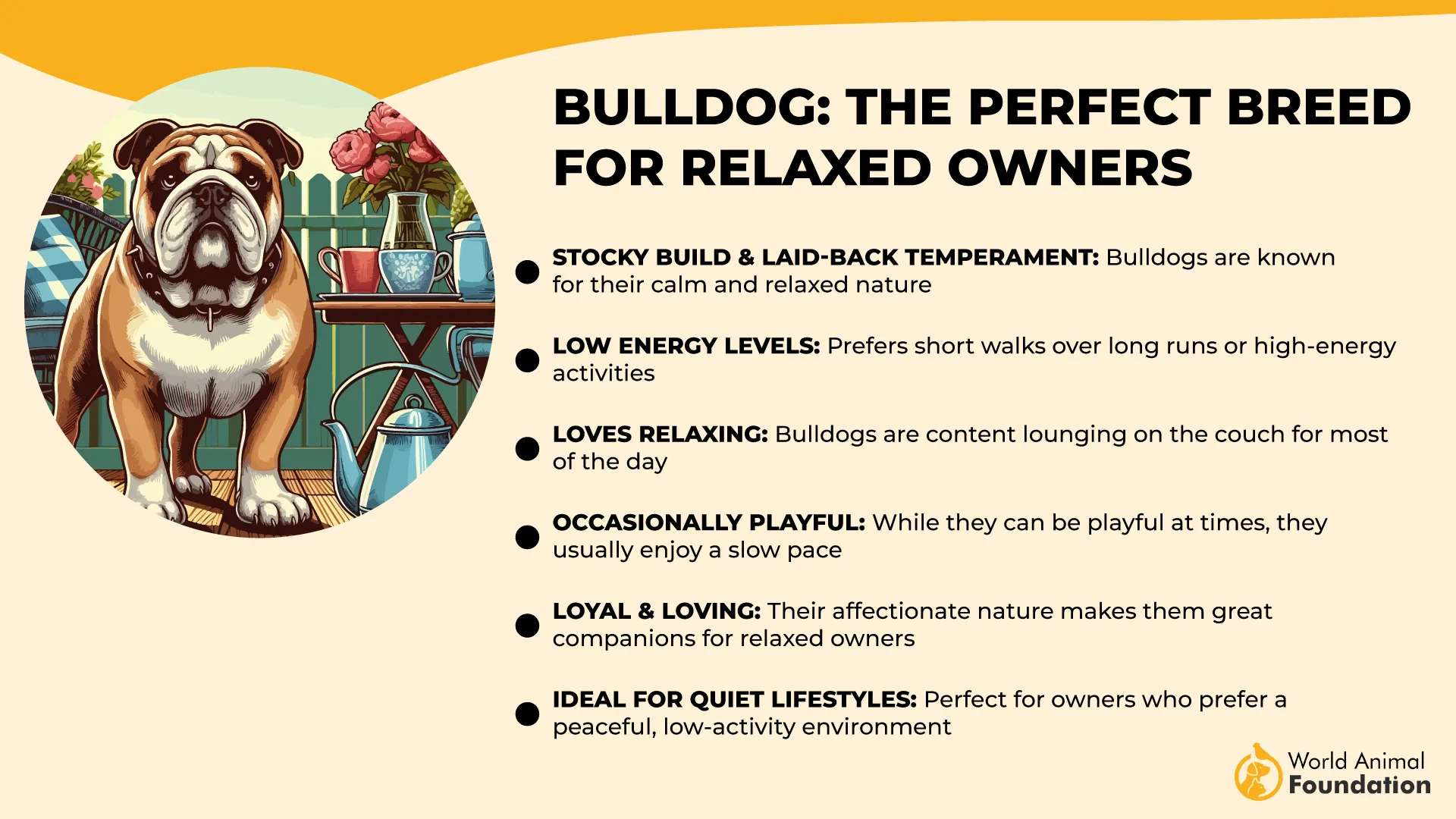
Interestingly, Bulldogs tend to get along well with other pets, especially if they’ve been raised with them. Their laid-back and calm demeanor makes them great companions for other dogs and even cats. However, because of their nervous tendencies, it’s important to supervise interactions with new animals until they’re fully comfortable.
6. Maltese
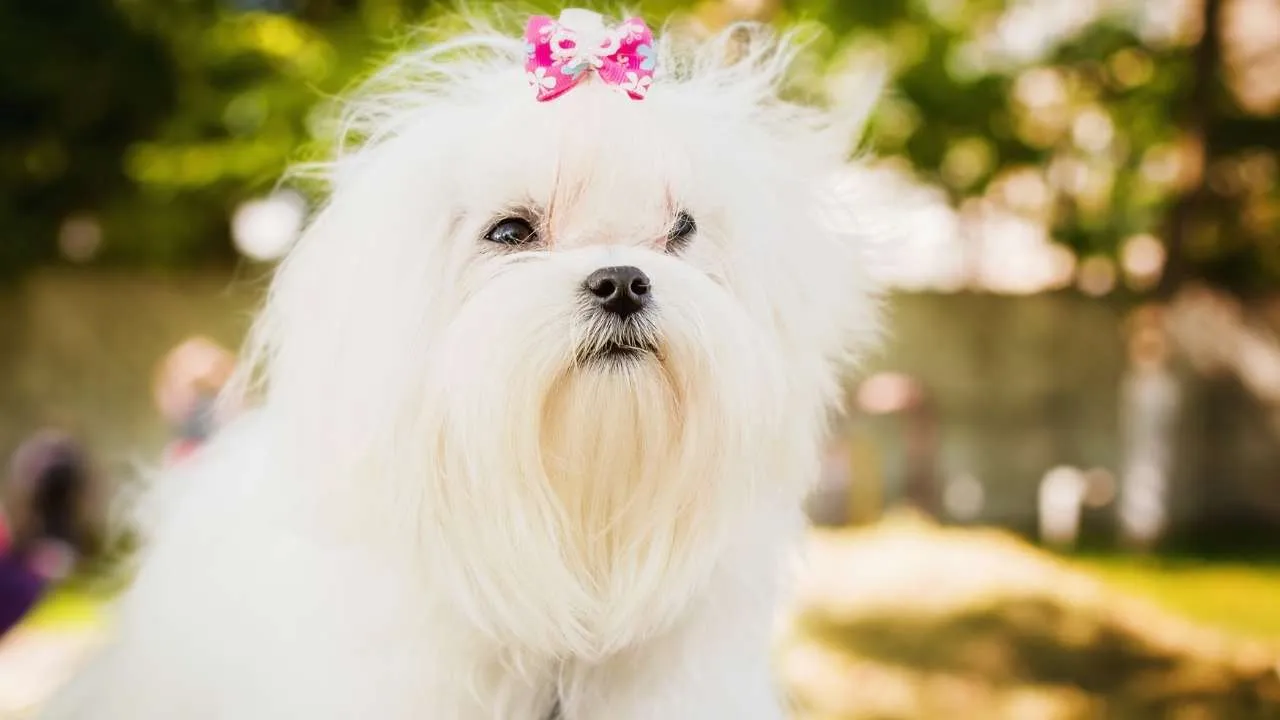
The Maltese is a tiny dog with a heart full of love. Despite their bold, fluffy appearance, these little dogs can be surprisingly timid and sensitive, especially around new people or environments. It’s as though their charming demeanor hides a more cautious, shy side.
This breed thrives on close bonds with its owners, and their nervousness often comes from a need for security and comfort. Maltese dogs are affectionate and loyal, but they tend to form these deep connections slowly, taking their time to trust new people. Their naturally anxious disposition means they might shy away from loud noises or sudden movements.
One interesting aspect of Maltese dogs is their sensitivity to their owners’ emotions. If their human is feeling stressed or anxious, it’s not uncommon for the Maltese to mirror those emotions, becoming more nervous themselves. This breed has an almost empathic nature, picking up on the energy of the room.
Because of their sensitive nature, training a Maltese requires a gentle, positive approach, says WebMD. These dogs don’t respond well to harsh training methods or punishment, which can lead to increased anxiety. Instead, patience and consistency are key. They respond best to praise and rewards.
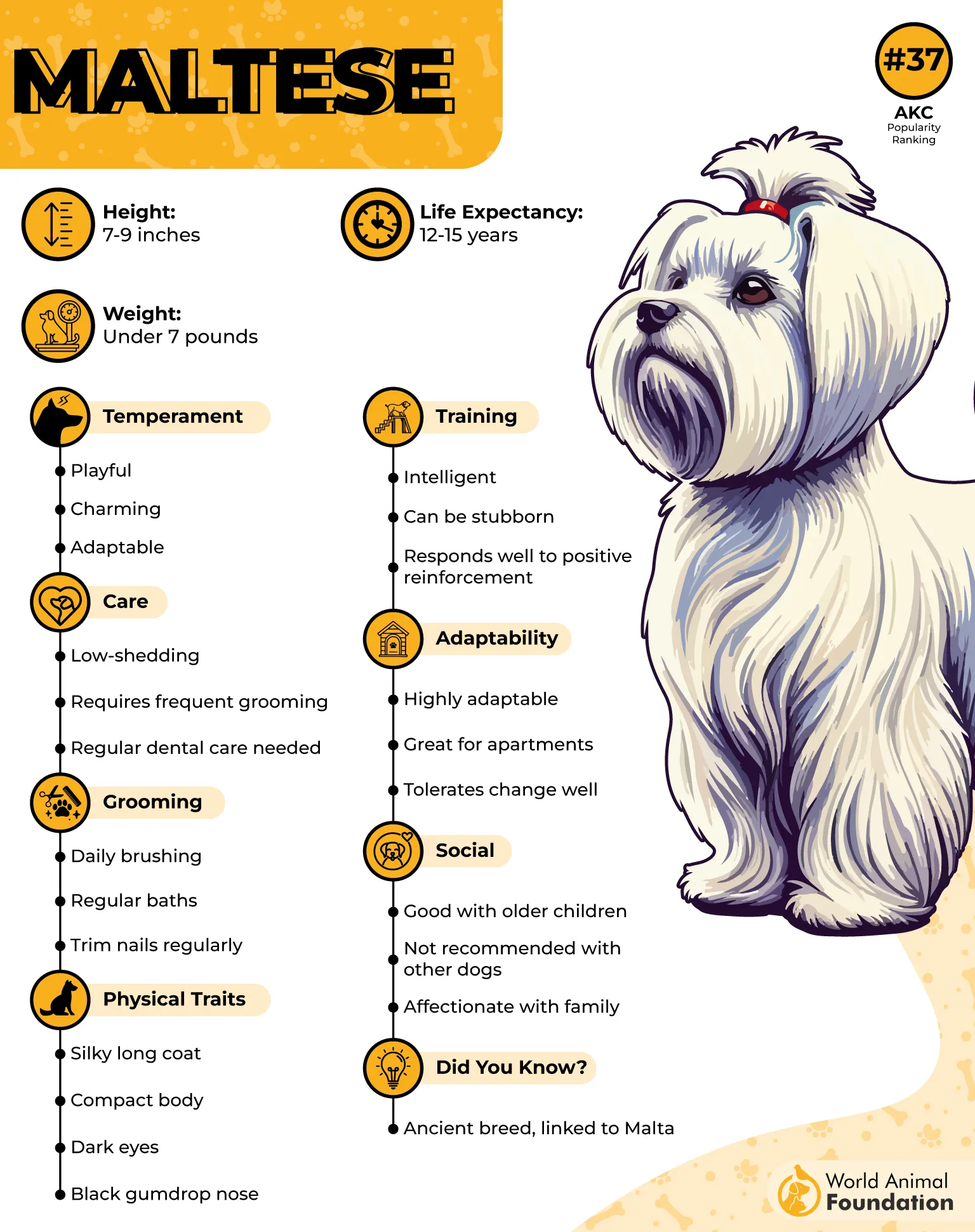
Maltese dogs can also be a bit possessive of their family, particularly if they sense any perceived threat to their bond. This instinct to protect their loved ones may come across as nervousness when they’re unsure about new people or animals entering the home. However, they’re not typically aggressive—more likely, they’ll exhibit nervous behavior like barking or retreating to their safe spot.
7. Yorkshire Terrier

The Yorkshire Terrier, or “Yorkie,” may be small in stature, but this little dog is packed with personality, often hiding a shy and nervous nature behind that feisty exterior. Known for their luxurious coats and energetic personalities, Yorkies can be surprisingly timid, especially when it comes to unfamiliar situations or meeting new people.
Once they trust their family, these little dogs are fiercely devoted, following their owners everywhere. Their bond with their humans runs deep, and while they may take a while to warm up to new people, they’ll shower their family with love and affection once they do.
Despite their nervous tendencies, Yorkies are quite adaptable. Their small size makes them well-suited for apartment living or homes with limited space. They’re also content to curl up on your lap after a quick walk or play session, making them ideal companions for people who enjoy quiet, cozy time at home.
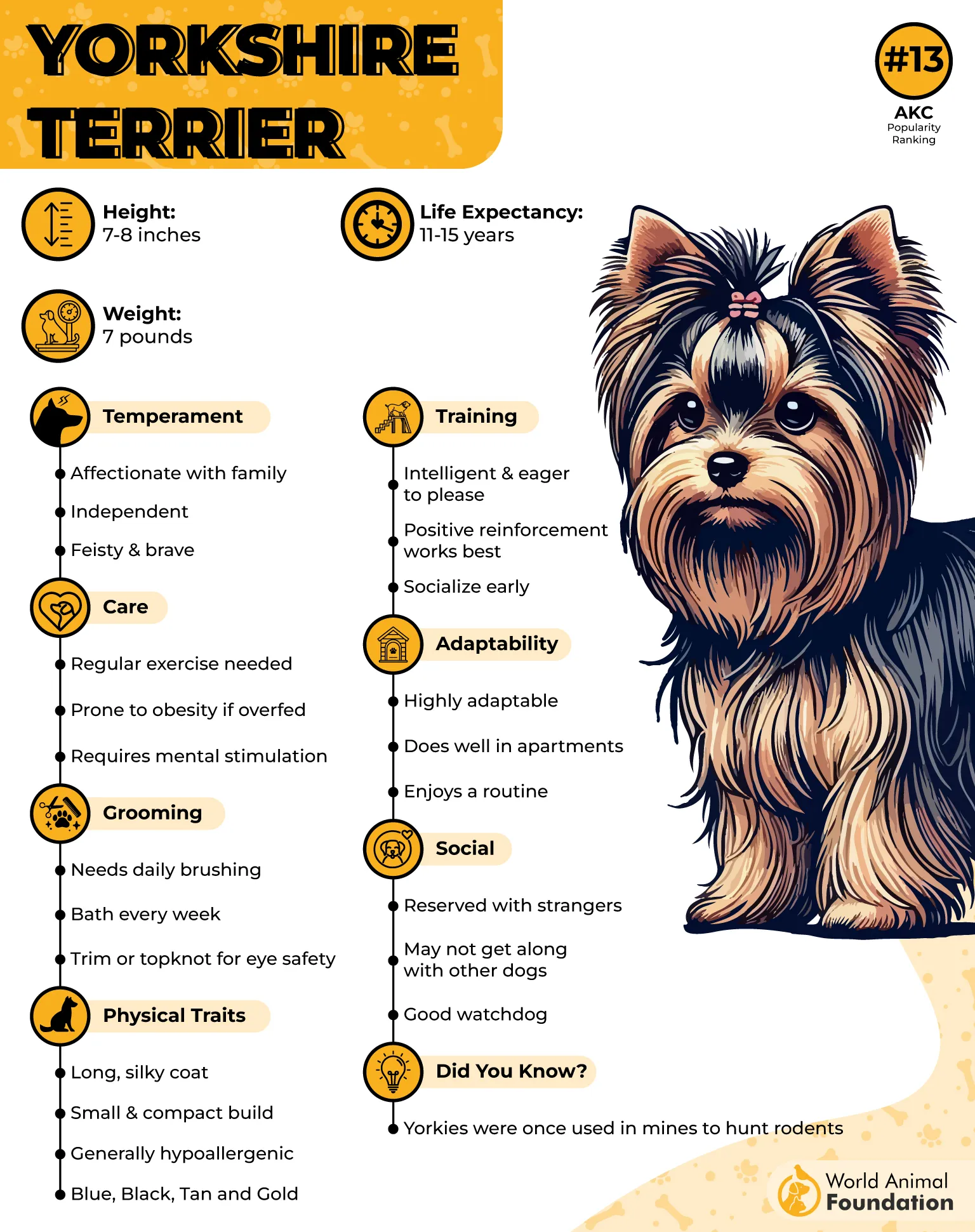
Interestingly, despite their small frame, Yorkies can be surprisingly brave, says AKC. Originally bred to catch rats in textile mills, their strong prey drive means they might not back down from something they perceive as a threat. This bravery, combined with their timidity in new situations, makes them an intriguing blend of warrior and worrier.
Yorkies can also be a little possessive, particularly when it comes to their owners. They often want to be the center of attention and can become anxious if they feel their bond with their family is threatened. Proper socialization and gentle guidance are important to help them feel more comfortable in the presence of others, preventing possessiveness from becoming an issue.
Conclusion
When it comes to nervous and timid dog breeds, understanding your pup’s body language and temperament is key to building a trusting bond. Certain shy dog breeds, like the Chihuahua, Lhasa Apso, Akita Inu, and even the Great Dane, despite being a massive dog, are known to exhibit timid behavior, especially in unfamiliar environments or when a stranger approaches. These anxious dogs may display signs like avoiding eye contact, excessive barking, or clinging to their owners during a walk or training session. Shy dogs may also struggle with new environments, making visits to the dog park or introductions to other dogs a challenge.
Many nervous dogs were initially bred for specific role,s such as hunting dogs or guard dogs, where wariness of strangers or being alert was an asset. But in modern life, that same trait can translate to extreme timidness or shy behavior in a home setting. Early and proper training, especially from a young age, can make a world of difference. Timid dogs tend to do their own thing and may not be social butterflies, but once they quickly realize that their loving home is safe and full of care, they begin to blossom.
It’s important for any pet parent to be mindful of their canine companion’s needs, especially when adopting from rescue situations or bringing home a new dog. While some breeds are notoriously skittish, many just need more socialization, careful training, and a person who will treat them with empathy. Pay close attention to your dog’s body language, respect their fear, and give them space to feel secure.


